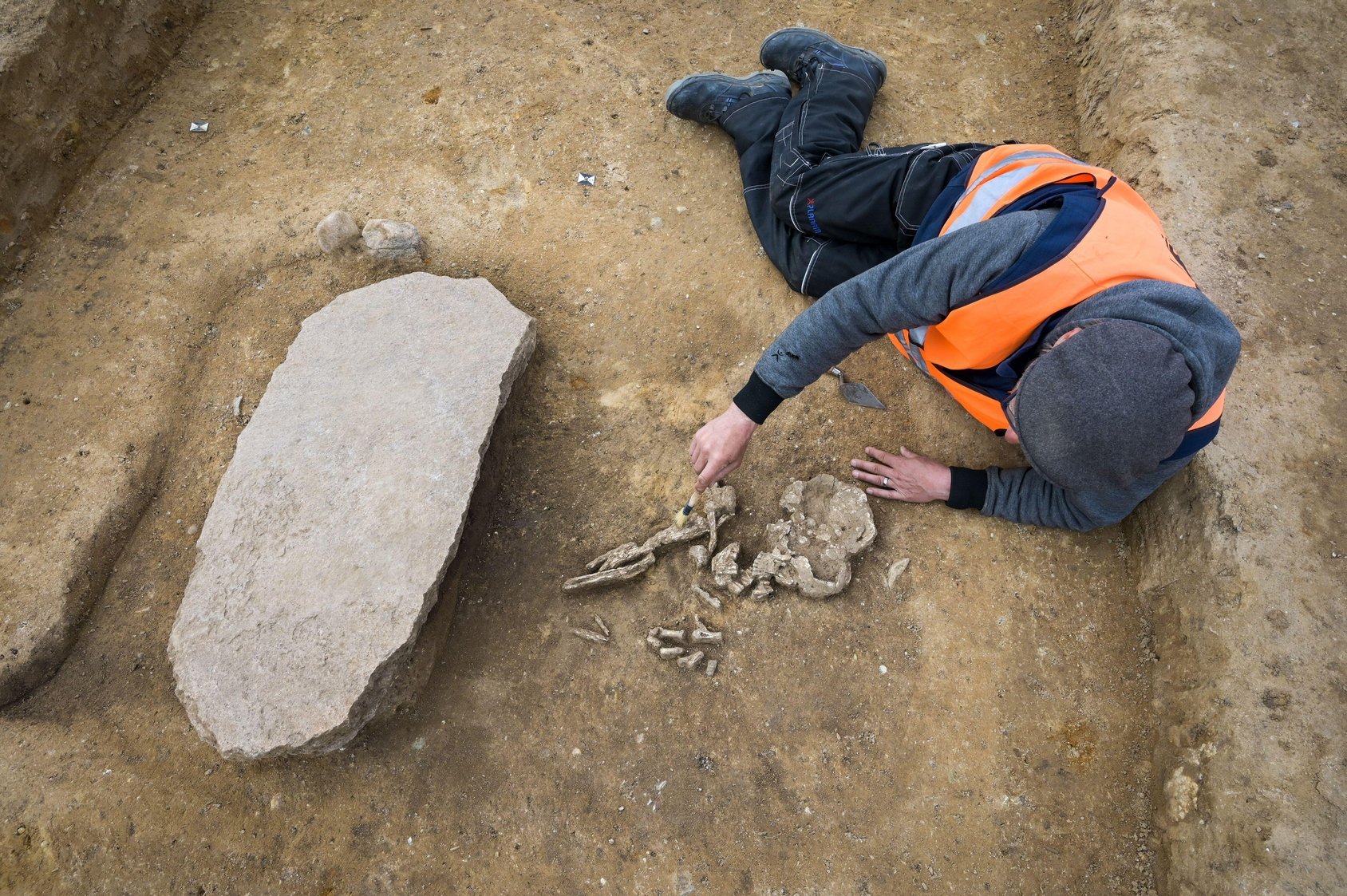Archaeologists from the State Office for Monument Preservation and Archaeology Saxony-Anhalt have uncovered a “zombie grave” during excavations near Oppin, Germany.
Excavations are in advance of the network expansion of the Südostlink direct current line, where a 93 mile long section through Saxony-Anhalt will be archaeologically examined until 2025.
The burial, which dates from around 4,200-year-ago during the Bronze Age, contains the remains of a man who died between the age of 40 to 60 years old.
A large stone block has been deposited on the man’s lower half, which according to the researchers, was likely placed to prevent the individual from rising as a revenant.
Project Manager, Susanne Friederich, said: “We know that even in the Stone Age, people were afraid of revenants. Back then, people believed that dead people sometimes tried to free themselves from their graves.”
In folklore, a revenant is an animated corpse found in various cultures, including Old Irish Celtic and Norse mythology, and the verbal traditions and lore of many European ethnic groups.
In medieval times, those inflicted with the revenant condition were generally suicide victims, witches, corpses possessed by a malevolent spirit, or the victim of a vampiric attack. In Nordic times, they were known as aptrgǫngur (meaning “again-walker(s)”), and were found inhabiting cairns and burial mounds.
The burial has been associated with the Bell Beaker culture, also known as the Bell Beaker complex, a Bronze Age people that emerged around 2800 BC and dispersed to cover most of Western Europe and some coastal areas in north-western Africa.
The culture is named after the inverted-bell beaker drinking vessel, with the term first introduced by John Abercromby in 1904. Since the Beaker culture left no written records, all speculations about their linguistic roots remain speculative. Some propose it could be an early Indo-European culture, while others suggest it might be linked to the Vasconic substrate.
Header Image Credit : Alamy (Licensed Under Copyright)
Sources : State Office for Monument Preservation and Archaeology Saxony-Anhalt







